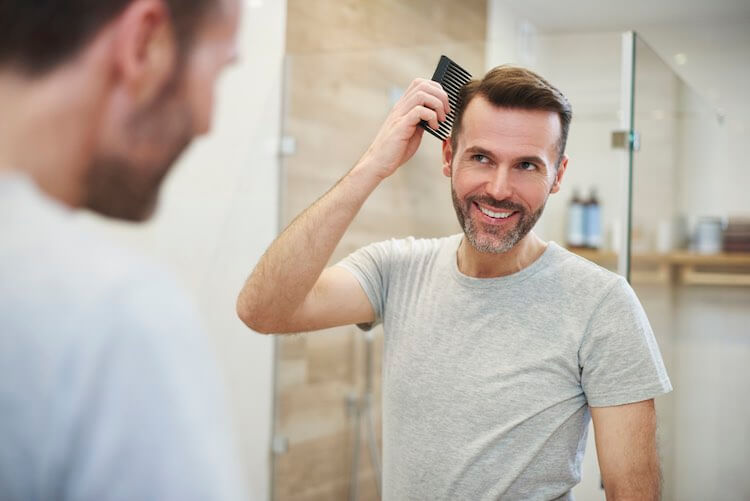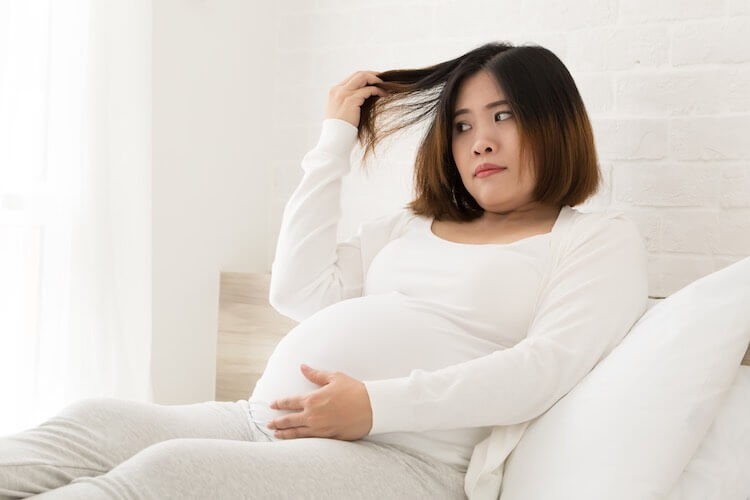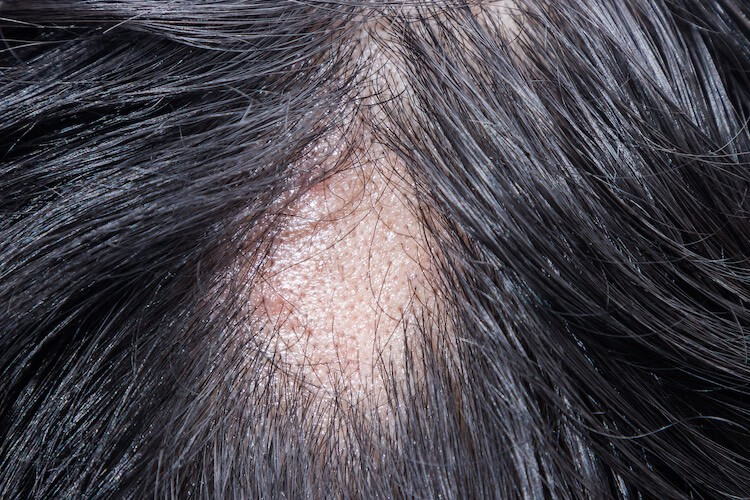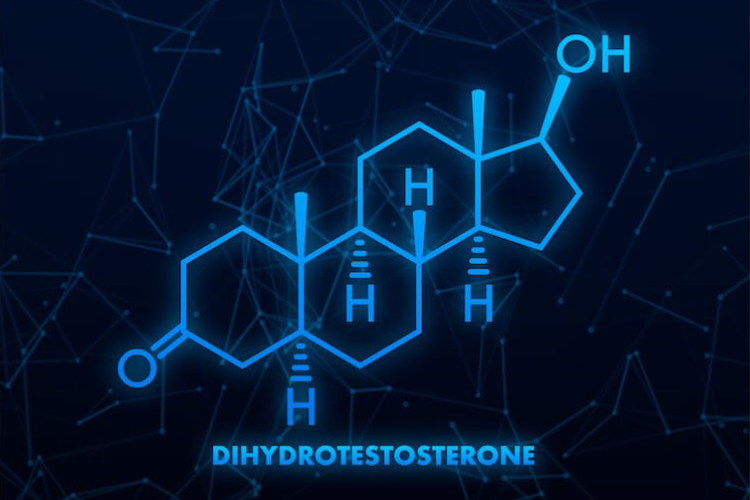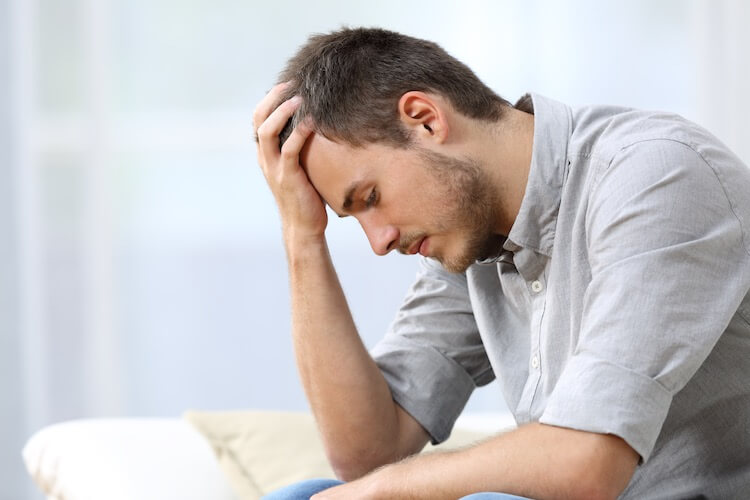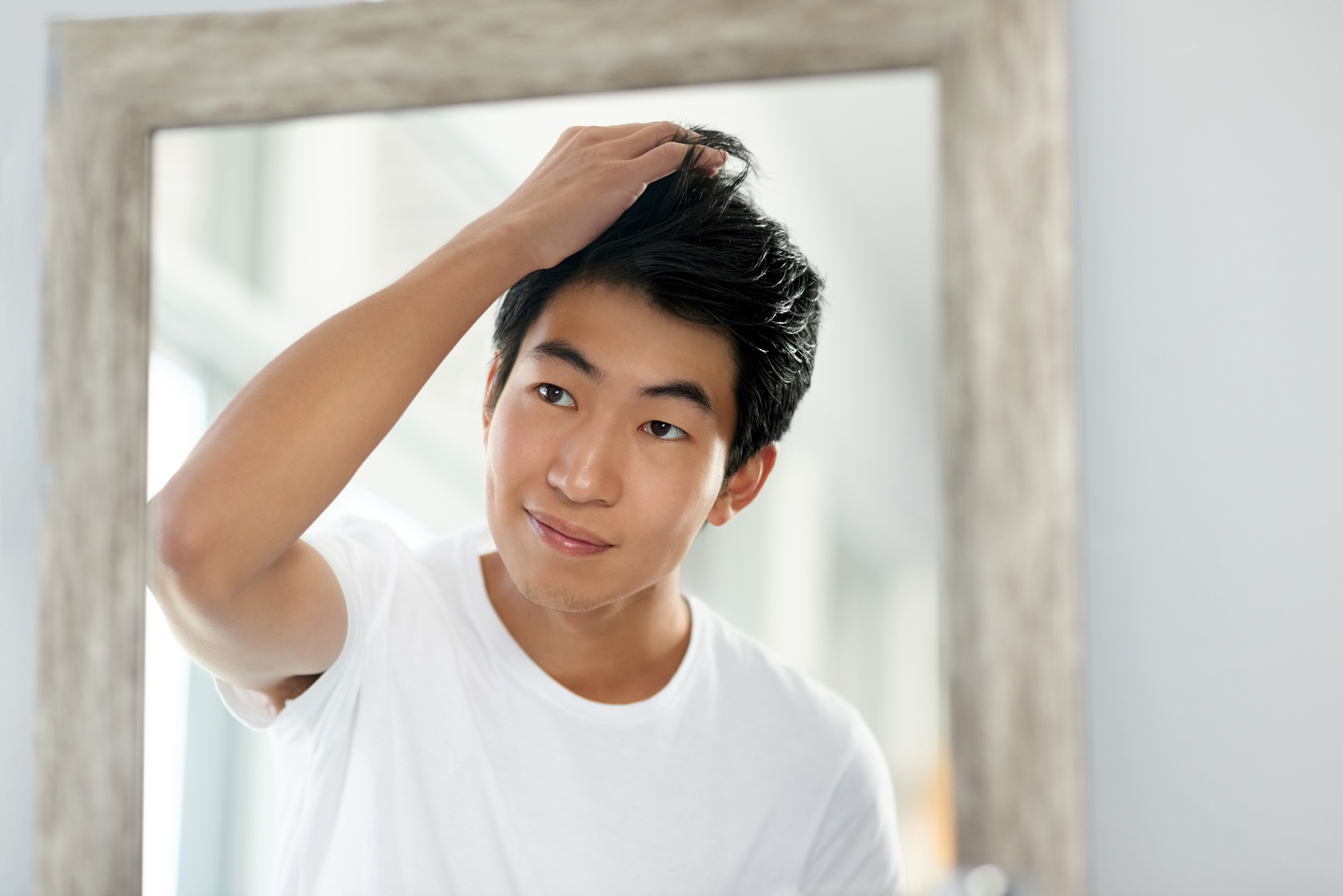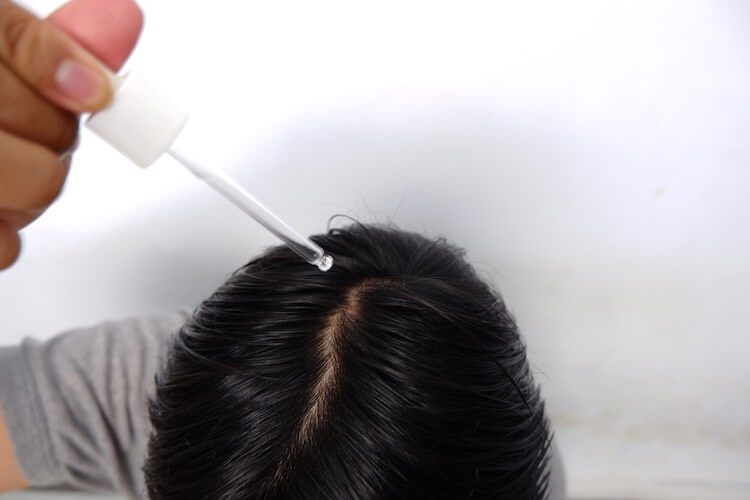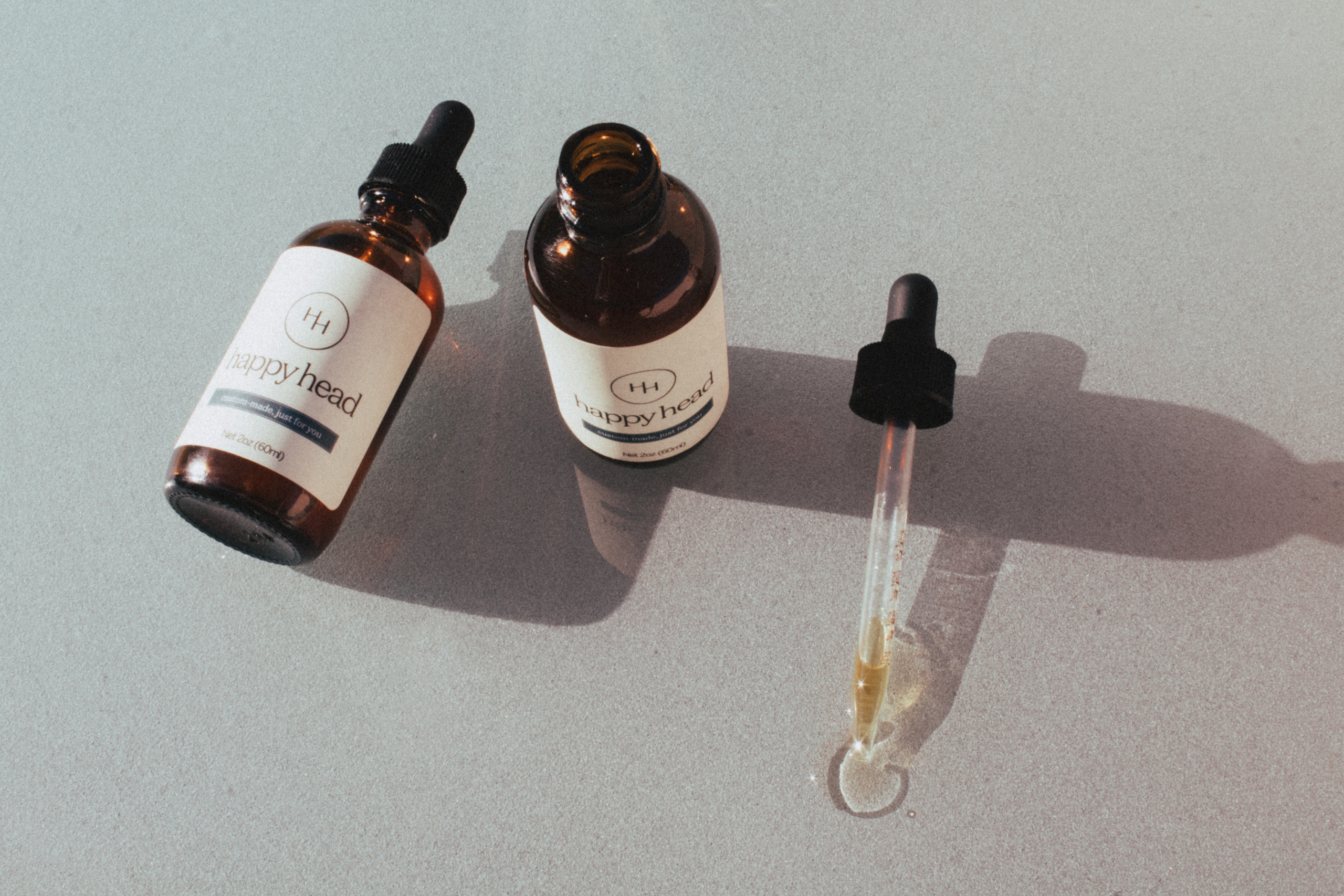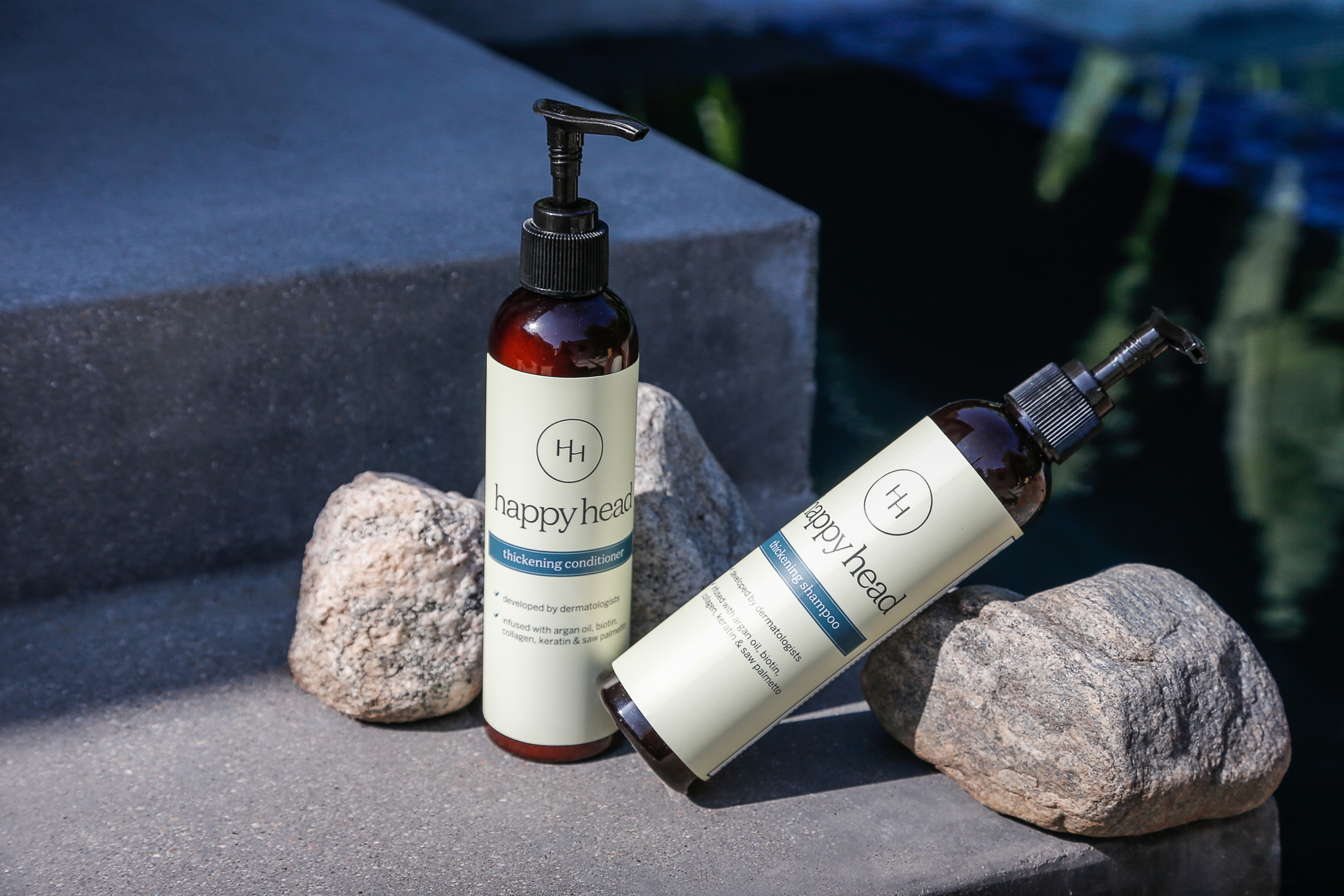What You Need to Know About Thyroid Imbalances & Hair Loss

Your hair is noticeably thinning, and it’s stressing you out. So, you visit your dermatologist, and they order blood work, including markers for Thyroid Stimulating Hormones (TSH), T3, T4, and thyroid antibody tests. Why are they doing that? What does your thyroid have to do with the strands you’ve been cleaning out of the sink each morning? Is there something more sinister causing your hair loss than you thought? Before you jump to conclusions and fear the worst, here’s what you need to know about thyroid imbalances and hair loss.
Thyroid Conditions Often Go Undetected
Consider this. Most hair loss is caused by male or female pattern hair loss, which is genetic. It doesn’t affect your health, just your hair. Thyroid conditions, however, can also cause hair loss, especially if untreated. According to the American Thyroid Association, more than twelve percent of the U.S. population will experience a thyroid disorder at some point in their lives. Up to sixty percent of those people are unaware of their condition. (01) That’s why dermatologists routinely run thyroid panels on their patients experiencing hair loss.
Your Thyroid Affects Your Hormones
Let’s talk a little bit about what the thyroid is and its purpose. There’s a butterfly-shaped endocrine gland in front of your neck. That’s your thyroid. Its main job is to produce hormones that control your metabolism and how your body uses energy. When your thyroid is out of whack, your hormones go haywire too. That’s where the problems begin.
Different Types of Thyroid Conditions
A few different conditions can cause thyroid dysfunction. Iodine deficiency is one. If you don’t get enough iodine in your diet, your thyroid may grow larger into a goiter. This is because your thyroid wants to hold onto enough iodine to produce enough thyroid hormone.
Autoimmune diseases can also cause your thyroid to go haywire. When this happens, the immune system attacks the thyroid. Hyperthyroidism, also called Graves Disease, can occur when the thyroid overproduces hormones. Underproduction can lead to hypothyroidism or Hashimoto’s disease. Other causes of thyroid dysfunction include a virus or bacteria, nodules, medications, medical treatments, and some genetic disorders. In some cases, pregnancy can trigger or exacerbate thyroid issues.
Having one autoimmune disease also puts you at risk of having another. For example, it’s not unusual for someone with Graves disease to experience alopecia areata or lichen planopilaris.
Weight Gain or Loss is Just One Symptom of Thyroid Imbalance
Symptoms of thyroid imbalance will vary based on the cause. Hypothyroidism may make you feel sensitive to the cold or gain weight. Hyperthyroidism causes the opposite — weight loss and often feeling warm. Other symptoms may include:
- Exhaustion
- Constipation
- Depression
- Muscle weakness
- Muscle cramps
- Brain fog
- Hair loss
Thyroid Imbalances Disrupt the Hair Growth Cycle
Now that we’ve reviewed some basics about thyroid disorders let’s circle back to where we started and discuss how your thyroid affects your hair. When your hormone production is disrupted, other processes in your body are affected too. That includes your hair. If your hair’s growth cycle is interrupted, your hair could fall out, and new growth could be halted. Thinning of your hair and eyebrows could result. Some patterns to look for include:
- Changes in your hair’s texture — Hair may become coarse and dry with hypothyroidism. It can become very soft and fine with hyperthyroidism
- Loss of facial hair — Hypothyroidism could cause hair loss on the outer edges of your eyebrows
- Smooth, circular bald patches in discrete parts of your scalp
- Diffuse hair loss or thinning across your entire scalp
There are Ways to Regrow Your Hair When You Have a Thyroid Condition
If your lab work comes back and indicates that you have a thyroid condition, your dermatologist will likely refer you to an endocrinologist. Endocrinologists specialize in treating glands and the hormones they produce. Often, once your thyroid is back in balance, your hair will grow back. While you’re in the wait-and-see mode, thickening shampoo and conditioner, and hair growth supplements may make your hair healthier, stronger, and shinier. They may also help reduce shedding.
If your thyroid is balanced, it’s been six months or longer, and your hair doesn’t seem to grow, it’s time to check in with your dermatologist. Depending on your diagnosis and gender, your dermatologist may recommend prescription vasodilators or DHT blockers. Hair loss medications enlarge your hair follicles and block DHT to support your hair’s growth. If you’re on thyroid medication and are concerned about taking multiple pills, easy-to-apply topical Minoxidil, Finasteride, or Spironolactone are available. Topicals are often more appealing because they are not systemic, don’t interact with other medications you are taking, and don’t cause sexual or other bothersome side effects.
It’s time to recap. Dermatologists routinely check their patients experiencing hair loss to rule out thyroid imbalances. Since so many people go undiagnosed, it’s not a stretch. If your thyroid is an issue, your hair will often grow back once your thyroid is back in balance. The right shampoo, conditioner, and supplements may help in the meanwhile. If your hair doesn’t grow back within a few months, it’s time to touch base with your dermatologist to determine if you have another conditions besides thyroid disease.
Dermatologists who are also hair loss specialists are not always easy to find. f you need a consultation, Happy Head is here. All of our doctors are board-certified dermatologists who specialize in hair growth. They are qualified to perform telemedicine and are here to help. Simply fill out a short questionnaire to get started.
Resources:
(01) https://www.thyroid.org/media-main/press-room/


